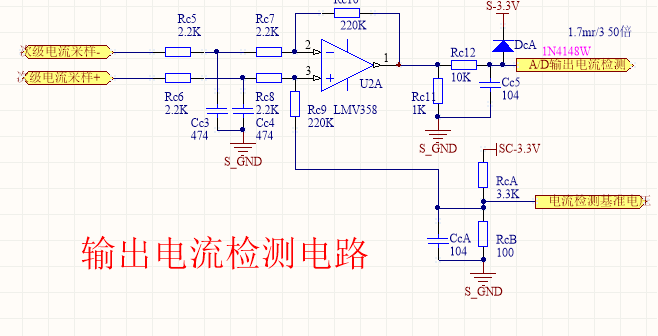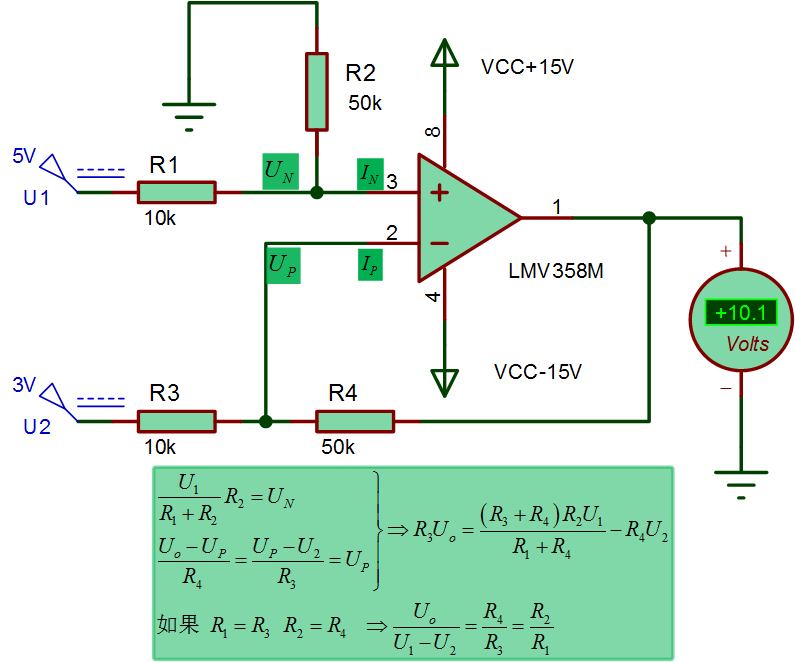选集
- 选集
- 用户选集
- 过滤的用户选集
选集
选择图元后运行外部命令获取选择的内容
Revit API中定义了单选、多选、框选等方式的用户选集,用户可以十分方便的使用鼠标和键盘完成这三种方式的图元选择。Revit API根据三种用户选集各自的特点,封装了多种实现的重载。
using System;
using System.Collections.Generic;
using System.IO;
using Autodesk.Revit.DB;
using Autodesk.Revit.UI;
using Autodesk.Revit.UI.Selection;namespace HelloRevitSelection
{[Autodesk.Revit.Attributes.Transaction(Autodesk.Revit.Attributes.TransactionMode.Manual)]public class SelectionElementSetCmd : IExternalCommand{public Autodesk.Revit.UI.Result Execute(ExternalCommandData commandData, ref string message, ElementSet elements){try{UIDocument uidoc = commandData.Application.ActiveUIDocument;Selection selection = uidoc.Selection;ICollection<ElementId> selectSet = selection.GetElementIds();if (0 == selectSet.Count){TaskDialog.Show("选集", "没有选择任何元素.");}else{string info = "当前文档的用户选集的元素Id为: ";foreach (ElementId id in selectSet){info += "\n\t" + id.IntegerValue;}TaskDialog.Show("选集", info);}return Autodesk.Revit.UI.Result.Succeeded;}catch(Exception ex){message = ex.Message;return Autodesk.Revit.UI.Result.Failed;}}}
}用户选集
Selection类还有一些允许用户选择新对象,甚至屏幕上一个点的方法。这让用户可以使用光标选择一 个或多个图元(或其他对象,如边或面),然后将控制返回给应用程序。这些功能并不自动向活动选择集添加新的选择。
●PickObject( )方法提示用户选择一个Revit模型中的对象。
●PickObjects( )方法提示用户选择多个Revit模型中的对象。
●PickElementsByRectangle( )方法提示用户用矩形选择多个Revit模型中的对象。
●PickPoint( )方法提示用户在活动草图平面内拾取一个点。
PickBox( )方法调用一个通用的双击编辑器,让用户在屏幕上指定一个矩形区域。调用PickObject( )或PickObjcts( )时即指定了需选对象的类型。可指定的对象类型有图元和图元上的点、边或面。每个Pick函数都可被重载,重载时可以带一个字符串参数,该参数用于定制状态栏消息
public Reference PickObject(ObjectType objectType);
public Reference PickObject(ObjectType objectType, string statusPrompt);
public Reference PickObject(ObjectType objectType, ISelectionFilter selectionFilter);
public Reference PickObject(ObjectType objectType, ISelectionFilter selectionFilter, string statusPrompt);
public IList<Reference> PickObjects(ObjectType objectType, string statusPrompt);
public IList<Reference> PickObjects(ObjectType objectType, ISelectionFilter selectionFilter);
public IList<Reference> PickObjects(ObjectType objectType, ISelectionFilter selectionFilter, string statusPrompt);
public IList<Reference> PickObjects(ObjectType objectType, ISelectionFilter selectionFilter, string statusPrompt, IList<Reference> pPreSelected);
public IList<Reference> PickObjects(ObjectType objectType);
public XYZ PickPoint();
public XYZ PickPoint(ObjectSnapTypes snapSettings);
public XYZ PickPoint(string statusPrompt);
public XYZ PickPoint(ObjectSnapTypes snapSettings, string statusPrompt);单选
using System;
using Autodesk.Revit.DB;
using Autodesk.Revit.UI;
using Autodesk.Revit.UI.Selection;namespace HelloRevitSelection
{[Autodesk.Revit.Attributes.Transaction(Autodesk.Revit.Attributes.TransactionMode.Manual)]public class SinglePickCmd : IExternalCommand{public Autodesk.Revit.UI.Result Execute(ExternalCommandData commandData, ref string message, ElementSet elements){try{UIDocument uidoc = commandData.Application.ActiveUIDocument;Document doc = uidoc.Document;Selection selection = uidoc.Selection;//在revit当前文档下,进行选择元素的操作Reference eleRef = selection.PickObject(ObjectType.Element);// 对用户单选有效性进行验证if (null != eleRef && ElementId.InvalidElementId != eleRef.ElementId){//获取直接选择的这个元素Element element = doc.GetElement(eleRef.ElementId);TaskDialog.Show("单选", string.Format("图元:{0}\nID:{1}\n 坐标:{2}", element.Name, element.Id, eleRef.GlobalPoint));}return Autodesk.Revit.UI.Result.Succeeded;}catch(Exception ex){message = ex.Message;return Autodesk.Revit.UI.Result.Failed;}}}}
点选获取坐标
public Autodesk.Revit.UI.Result Execute(ExternalCommandData commandData, ref string message, ElementSet elements){try{UIDocument uidoc = commandData.Application.ActiveUIDocument;Document doc = uidoc.Document;Selection selection = uidoc.Selection;string msg = string.Empty;//点选获取坐标XYZ xyz = selection.PickPoint();msg = xyz.ToString();TaskDialog.Show(this.GetType().Name, msg);//AnnotationSymbolreturn Result.Succeeded;}catch (Exception ex){message = ex.Message;return Result.Failed;}}
ObjectType

过滤的用户选集
PickObject()、PickObjects( )和PickElementsByRectangle( )都有一一 个以ISelectionFilter作为参数的重载。ISelectionFilter是一一个接口, 在选集操作期间,可用此接口实现过滤对象。它有两个可以重载的方法: AllowElement()用 于指定是否允许选择某个图元,AllowReference( )用于指定是否允许选择对某个几何体的参照。
ISelectionFilter接口
using Autodesk.Revit.DB;namespace Autodesk.Revit.UI.Selection
{public interface ISelectionFilter{bool AllowElement(DB.Element elem);bool AllowReference(Reference reference, XYZ position);}
}
一个例子·
using System;
using System.Collections.Generic;
using System.Linq;
using System.Text;
using System.Threading.Tasks;using Autodesk.Revit.Attributes;
using Autodesk.Revit.DB;
using Autodesk.Revit.UI;
using Autodesk.Revit.UI.Selection;namespace DemoFilterUserSelections
{[Autodesk.Revit.Attributes.Transaction(Autodesk.Revit.Attributes.TransactionMode.Manual)]public class DemoFilterSelection : IExternalCommand{public Autodesk.Revit.UI.Result Execute(ExternalCommandData commandData, ref string message, ElementSet elements){try{//句柄UIDocument uidoc = commandData.Application.ActiveUIDocument;//文档Document doc = uidoc.Document;//获取选择的图元集合Selection selection = uidoc.Selection;string msg = string.Empty;ISelectionFilter wallFilter = new WallSelectionFilter();//获取用户选集IList<Reference> eleRefs = selection.PickObjects(ObjectType.Element,wallFilter);if (0 == eleRefs.Count){TaskDialog.Show("过滤的用户选集", "用户没有选择图元");}else{foreach (Reference eleRef in eleRefs){//获取这个元素Element element = doc.GetElement(eleRef.ElementId);msg += "图元:" + element.Name + "ID:" + element.Id + "坐标:" + eleRef.GlobalPoint+"\n";}TaskDialog.Show("过滤的用户选集", msg);}return Autodesk.Revit.UI.Result.Succeeded;}catch (Exception ex){message = ex.Message;return Autodesk.Revit.UI.Result.Failed;}}}//新建一个WallSelectionFilter类,实现ISelectionFilter接口public class WallSelectionFilter : ISelectionFilter{//方法:允许什么样的元素被选择public bool AllowElement(Element elem){return elem is Wall;}//方法:否允许选择对某个几何体的参照,即是否允许引用public bool AllowReference(Reference reference, XYZ position){return false; //设置为不允许}}}SDK的例子
//
// (C) Copyright 2003-2019 by Autodesk, Inc.
//
// Permission to use, copy, modify, and distribute this software in
// object code form for any purpose and without fee is hereby granted,
// provided that the above copyright notice appears in all copies and
// that both that copyright notice and the limited warranty and
// restricted rights notice below appear in all supporting
// documentation.
//
// AUTODESK PROVIDES THIS PROGRAM "AS IS" AND WITH ALL FAULTS.
// AUTODESK SPECIFICALLY DISCLAIMS ANY IMPLIED WARRANTY OF
// MERCHANTABILITY OR FITNESS FOR A PARTICULAR USE. AUTODESK, INC.
// DOES NOT WARRANT THAT THE OPERATION OF THE PROGRAM WILL BE
// UNINTERRUPTED OR ERROR FREE.
//
// Use, duplication, or disclosure by the U.S. Government is subject to
// restrictions set forth in FAR 52.227-19 (Commercial Computer
// Software - Restricted Rights) and DFAR 252.227-7013(c)(1)(ii)
// (Rights in Technical Data and Computer Software), as applicable.
//using System;
using System.Collections.Generic;
using System.Linq;
using System.Text;using Autodesk.Revit;
using Autodesk.Revit.ApplicationServices;
using Autodesk.Revit.DB;
using Autodesk.Revit.UI.Selection;namespace Revit.SDK.Samples.Selections.CS
{/// <summary>/// A default filter./// All objects are allowed to be picked./// </summary>public class DefaultElementsFilter : ISelectionFilter{/// <summary>/// Allow all the element to be selected/// </summary>/// <param name="element">A candidate element in selection operation.</param>/// <returns>Return true to allow the user to select this candidate element.</returns>public bool AllowElement(Element element){return true;}/// <summary>/// Allow all the reference to be selected/// </summary>/// <param name="refer">A candidate reference in selection operation.</param>/// <param name="point">The 3D position of the mouse on the candidate reference.</param>/// <returns>Return true to allow the user to select this candidate reference.</returns>public bool AllowReference(Reference refer, XYZ point){return true;}}/// <summary>/// A Filter for Wall Face./// Only wall faces are allowed to be picked./// </summary>public class WallFaceFilter : ISelectionFilter{// Revit document.Document m_doc = null;/// <summary>/// Constructor the filter and initialize the document./// </summary>/// <param name="doc">The document.</param>public WallFaceFilter(Document doc){m_doc = doc;}/// <summary>/// Allow wall to be selected/// </summary>/// <param name="element">A candidate element in selection operation.</param>/// <returns>Return true for wall. Return false for non wall element.</returns>public bool AllowElement(Element element){return element is Wall;}/// <summary>/// Allow face reference to be selected/// </summary>/// <param name="refer">A candidate reference in selection operation.</param>/// <param name="point">The 3D position of the mouse on the candidate reference.</param>/// <returns>Return true for face reference. Return false for non face reference.</returns>public bool AllowReference(Reference refer, XYZ point){GeometryObject geoObject = m_doc.GetElement(refer).GetGeometryObjectFromReference(refer);return geoObject != null && geoObject is Face;}}/// <summary>/// A Filter for planar face./// Only planar faces are allowed to be picked./// </summary>public class PlanarFaceFilter : ISelectionFilter{// Revit document.Document m_doc = null;/// <summary>/// Constructor the filter and initialize the document./// </summary>/// <param name="doc">The document.</param>public PlanarFaceFilter(Document doc){m_doc = doc;}/// <summary>/// Allow all the element to be selected/// </summary>/// <param name="element">A candidate element in selection operation.</param>/// <returns>Return true to allow the user to select this candidate element.</returns>public bool AllowElement(Element element){return true;}/// <summary>/// Allow planar face reference to be selected/// </summary>/// <param name="refer">A candidate reference in selection operation.</param>/// <param name="point">The 3D position of the mouse on the candidate reference.</param>/// <returns>Return true for planar face reference. Return false for non planar face reference.</returns>public bool AllowReference(Reference refer, XYZ point){GeometryObject geoObject = m_doc.GetElement(refer).GetGeometryObjectFromReference(refer);return geoObject != null && geoObject is PlanarFace;}}
}//
// (C) Copyright 2003-2019 by Autodesk, Inc.
//
// Permission to use, copy, modify, and distribute this software in
// object code form for any purpose and without fee is hereby granted,
// provided that the above copyright notice appears in all copies and
// that both that copyright notice and the limited warranty and
// restricted rights notice below appear in all supporting
// documentation.
//
// AUTODESK PROVIDES THIS PROGRAM "AS IS" AND WITH ALL FAULTS.
// AUTODESK SPECIFICALLY DISCLAIMS ANY IMPLIED WARRANTY OF
// MERCHANTABILITY OR FITNESS FOR A PARTICULAR USE. AUTODESK, INC.
// DOES NOT WARRANT THAT THE OPERATION OF THE PROGRAM WILL BE
// UNINTERRUPTED OR ERROR FREE.
//
// Use, duplication, or disclosure by the U.S. Government is subject to
// restrictions set forth in FAR 52.227-19 (Commercial Computer
// Software - Restricted Rights) and DFAR 252.227-7013(c)(1)(ii)
// (Rights in Technical Data and Computer Software), as applicable.
//
using System;
using System.Collections.Generic;
using System.Linq;
using System.Text;using Autodesk.Revit;
using Autodesk.Revit.ApplicationServices;
using Autodesk.Revit.DB;
using Autodesk.Revit.UI;
using Autodesk.Revit.UI.Selection;
using Reference = Autodesk.Revit.DB.Reference;
using Exceptions = Autodesk.Revit.Exceptions;namespace Revit.SDK.Samples.Selections.CS
{/// <summary>/// A enum class for specific selection type./// </summary>public enum SelectionType{/// <summary>/// type for select element./// </summary>Element,/// <summary>/// type for select face./// </summary>Face,/// <summary>/// type for select edge./// </summary>Edge,/// <summary>/// type for select point./// </summary>Point}/// <summary>/// A class for object selection and storage./// </summary>public class SelectionManager{/// <summary>/// To store a reference to the commandData./// </summary>ExternalCommandData m_commandData;/// <summary>/// store the application/// </summary>UIApplication m_application;/// <summary>/// store the document/// </summary>UIDocument m_document;/// <summary>/// For basic creation./// </summary>Autodesk.Revit.Creation.ItemFactoryBase m_CreationBase;/// <summary>/// The picked point of element./// </summary>XYZ m_elemPickedPoint;SelectionType m_selectionType = SelectionType.Element;/// <summary>/// For specific selection type./// </summary>public SelectionType SelectionType{get { return m_selectionType; }set { m_selectionType = value; }}Element m_selectedElement;/// <summary>/// Store the selected element./// </summary>public Element SelectedElement{get{ return m_selectedElement;}set { m_selectedElement = value; }}XYZ m_selectedPoint;/// <summary>/// Store the selected point. /// When the point is picked, move the element to the point./// </summary>public XYZ SelectedPoint{get { return m_selectedPoint; }set { m_selectedPoint = value; if (m_selectedElement != null && m_selectedPoint != null){MoveElement(m_selectedElement, m_selectedPoint);}}} /// <summary>/// constructor of SelectionManager/// </summary>/// <param name="commandData"></param>public SelectionManager(ExternalCommandData commandData){m_commandData = commandData;m_application = m_commandData.Application;m_document = m_application.ActiveUIDocument;if (m_document.Document.IsFamilyDocument){m_CreationBase = m_document.Document.FamilyCreate;}else{m_CreationBase = m_document.Document.Create;}}/// <summary>/// Select objects according to the selection type./// </summary>public void SelectObjects(){switch (m_selectionType){case SelectionType.Element:PickElement(); // pick elementbreak;case SelectionType.Face:break;case SelectionType.Edge:break;case SelectionType.Point:PickPoint(); // pick pointbreak;}}/// <summary>/// Pick the element from UI./// </summary>internal void PickElement(){try{// Pick an element.Reference eRef = m_document.Selection.PickObject(Autodesk.Revit.UI.Selection.ObjectType.Element, "Please pick an element.");if (eRef != null && eRef.ElementId != ElementId.InvalidElementId){SelectedElement = m_document.Document.GetElement(eRef);m_elemPickedPoint = eRef.GlobalPoint;}}catch (Exceptions.OperationCanceledException){// Element selection cancelled.SelectedElement = null;}}/// <summary>/// Pick the point from UI./// </summary>internal void PickPoint(){try{// Pick a point.XYZ targetPoint = m_document.Selection.PickPoint("Please pick a point.");SelectedPoint = targetPoint;}catch (Exceptions.OperationCanceledException){// Point selection cancelled.SelectedPoint = null;}}/// <summary>/// Move an element to the point./// </summary>/// <param name="elem">The element to be moved.</param>/// <param name="targetPoint">The location element to be moved.</param>internal void MoveElement(Element elem, XYZ targetPoint){XYZ vecToMove = targetPoint - m_elemPickedPoint;m_elemPickedPoint = targetPoint;ElementTransformUtils.MoveElement(m_document.Document,elem.Id, vecToMove);}}
}


















